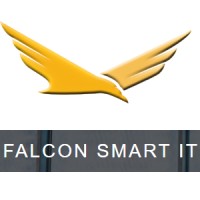Description
Job Description:
DevOps Tools
1. Source Control Management (SCM) Tools: Git, Bitbucket, and Subversion.
2. Continuous Integration (CI) Tools: Jenkins, Travis CI, and CircleCI, GitLab, Azure DevOps
3. Continuous Deployment (CD) Tools: Jenkins, AWS CodeDeploy, and Azure
4. Configuration Management Tools: Ansible, Puppet, and Chef
5. Monitoring Tools: Nagios, Zabbix, and New Relic
6. Log Management Tools: ELK Stack (Elasticsearch, Logstash, and Kibana) and Splunk
7. Test Automation Tools: Selenium, JUnit, and TestNG
8. Containerization Tools: Docker, Kubernetes, and OpenShift
9. Virtualization Tools: VMware, Hyper-V, and VirtualBox
Roles & Responsibilities
1. Solution Design: Designing and documenting high-level Azure solutions that meet the specific needs of the organization, taking into account factors such as scalability, security, and availability.
2. Technical Leadership: Providing technical leadership and guidance to development teams, helping them to understand and implement the architecture, and ensuring that the solution meets the defined design standards.
3. Deployment and Configuration: Deploying and configuring Azure services, such as virtual machines, storage, and network infrastructure, to meet the requirements of the solution.
4. Performance Monitoring and Optimization: Monitoring the performance of the solution and making any necessary changes to optimize performance and ensure that it meets the required service level agreements (SLAs).
5. Cost Management: Managing costs associated with the solution by monitoring usage, optimizing resource utilization, and making recommendations for cost-saving changes.
6. Security and Compliance: Ensuring that the solution meets security and compliance requirements by implementing security best practices, such as encryption, access control, and identity management.
7. Disaster Recovery and Business Continuity: Designing and implementing disaster recovery and business continuity plans to ensure that the solution is able to continue operating in the event of an outage or disaster.
8. Technical Documentation: Creating and maintaining technical documentation, such as architecture diagrams, configuration files, and deployment scripts, to ensure that the solution can be easily understood and maintained.
9. Training and Mentoring: Providing training and mentoring to junior architects and developers, helping them to develop their skills and knowledge in Azure and cloud computing.
As a DevOps Focal, we expect the candidate to be responsible for
1. Continuous Integration and Continuous Deployment (CI/CD): Implementing and maintaining CI/CD pipelines, automating the build, testing, and deployment of applications, and ensuring that the code is always in a releasable state.
2. Source Control Management: Managing source control repositories, such as Git, and ensuring that code is appropriately versioned, branched, and merged according to best practices.
3. Build and Release Management: Configuring and managing build and Release definitions, automating the creation of build artefacts, and controlling the deployment of applications to various environments.
4. Testing: Automating and executing tests, such as unit tests, integration tests, and acceptance tests, to ensure that the application meets the specified requirements.
5. Infrastructure as Code (IaC): Implementing IaC practices, using tools such as Terraform, to automate the provisioning and management of infrastructure.
6. Monitoring and Diagnostics: Monitoring the performance and availability of applications and using tools such as Azure Monitor and Log Analytics to diagnose and resolve issues.
7. Security: Ensuring that the DevOps processes and tools adhere to security best practices, such as encryption and access control, and that the applications are deployed securely.
8. Collaboration: Collaborating with developers, operations teams, and stakeholders to ensure that the DevOps processes and tools are aligned with the organization's goals and objectives.
9. Technical Documentation: Creating and maintaining technical documentation, such as architecture diagrams, deployment scripts, and runbooks, to ensure that the DevOps processes and tools can be easily understood and maintained.
Overall, an Azure architect plays a critical role in ensuring the success of cloud-based solutions by providing technical leadership, designing and deploying robust and scalable solutions, and ensuring that the solution meets the specific needs of the organization
Education
Any Graduate
- Posted On: 08-Nov-2024
- Experience: 5+ years of experience
- Openings: 2
- Category: cloud architect
- Tenure: Flexible Position

